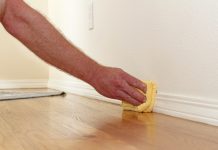In today’s environmentally conscious world, making sustainable choices for your home is more important than ever. Flooring, one of your home’s largest surfaces, plays a crucial role in determining your home’s overall environmental impact. This guide will walk you through everything you need to know about selecting sustainable flooring options, helping you make stylish and kind choices for the planet.
Step 1: Understand Sustainability
To choose sustainable flooring, it’s essential to understand what makes a flooring option eco-friendly. Sustainable flooring is produced from renewable resources, involves environmentally friendly production processes, has a long lifespan, and is recyclable or biodegradable at the end of its life cycle. The benefits of opting for sustainable flooring are manifold: reduced carbon footprint, improved indoor air quality, and a healthier living environment.
Step 2: Types of Sustainable Flooring Options

Bamboo: Bamboo is one of the most popular sustainable flooring options. It’s a rapidly renewable resource, with some species growing up to 3 feet in 24 hours. Bamboo flooring is durable, stylish, and available in various finishes to match any décor. Additionally, bamboo has a lower environmental impact compared to traditional hardwood floors because bamboo can be harvested without killing the plant.
Cork: Cork flooring is made from the bark of cork oak trees, which regenerates after harvesting. This makes it an excellent sustainable option. Cork is naturally anti-microbial, resistant to mould and mildew, and provides a comfortable, cushioned surface. It’s also an excellent insulator, helping to reduce energy costs.
Reclaimed Wood: Reclaimed wood flooring uses old wood from sources like barns, factories, and warehouses. This not only reduces the demand for new timber but also gives a second life to wood that would otherwise be discarded. Each piece of reclaimed wood has a unique history and character, adding a rustic charm to your home.
Linoleum: Often confused with vinyl, linoleum is made from natural materials like linseed oil, cork dust, wood flour, and jute. It’s biodegradable and has a low environmental impact. Linoleum is also durable, easy to maintain, and comes in a variety of colours and patterns, making it a versatile choice for many homes.
Recycled Materials: Recycled flooring options include tiles made from recycled glass, rubber flooring made from old tyres, and carpets made from recycled plastic bottles. These options help reduce landfill waste and conserve natural resources. They are also durable and available in many attractive styles and colours.
Step 3: Consider the Environmental Certifications
When selecting sustainable flooring, look for products with recognised environmental certifications. These certifications ensure that the products meet strict environmental and health standards.
FSC (Forest Stewardship Council): FSC certification ensures that the wood comes from responsibly managed forests that provide environmental, social, and economic benefits. This certification is crucial for ensuring the sustainability of wood and bamboo flooring.
GREENGUARD: GREENGUARD certification indicates that a product has low chemical emissions, improving indoor air quality. This is particularly important for flooring materials, as they can off-gas volatile organic compounds (VOCs) that affect indoor air quality.
Cradle to Cradle: Cradle to Cradle certification assesses the sustainability of a product’s entire lifecycle, from production to disposal. It ensures that the product is made with safe materials, can be recycled or composted, and is manufactured using renewable energy.
Step 4: Evaluate Durability and Maintenance

Sustainable flooring options are environmentally friendly, durable, and easy to maintain. Here’s a comparison of some popular options:
Bamboo: Bamboo flooring is extremely hard and durable, often outperforming traditional hardwood. It’s resistant to scratches and dents but should be kept dry, as prolonged exposure to water can damage it. Regular sweeping and occasional mopping with a damp cloth is usually sufficient for maintenance.
Cork: Cork is softer than other flooring options, making it more comfortable and susceptible to dents and scratches. It’s important to use furniture pads and avoid wearing high heels on cork floors. Cork flooring can be cleaned with a vacuum or a damp mop.
Reclaimed Wood: Reclaimed wood is often more durable than new wood because it comes from old-growth trees that are denser and more resilient. It’s important to seal reclaimed wood properly to protect it from moisture and wear. Regular cleaning and periodic refinishing can keep it looking beautiful for years.
Linoleum: Linoleum is known for its durability and resistance to wear and tear. It’s also easy to clean with a simple sweep and mop routine. Because it’s a natural material, it can fade or yellow over time, so regular maintenance and occasional resealing can help preserve its appearance.
Recycled Materials: Recycled glass tiles are extremely durable and resistant to stains, scratches, and moisture. Rubber flooring from recycled tyres is also highly durable, resistant to water and stains, and provides a soft, cushioned surface. Both options are easy to clean and maintain.
Step 5: Aesthetic and Functional Considerations
When choosing sustainable flooring, it’s important to consider both aesthetics and functionality. Here’s how different options measure up:
Bamboo: Bamboo flooring comes in a variety of colours, ranging from natural light tones to darker, carbonised shades. It has a sleek, modern appearance that complements contemporary and traditional interiors alike.
Cork: Cork flooring offers a warm, natural look with a variety of patterns and colours. Its unique texture adds visual interest and can enhance the comfort of any room.
Reclaimed Wood: Reclaimed wood brings a rustic, vintage charm to any space. Each plank has its own character, with unique knots, grains, and colours that tell a story of its past.
Linoleum: Linoleum is available in an array of colours and patterns, including marbled, solid, and wood-like finishes. Its versatility allows it to fit into various design schemes, from classic to modern.
Recycled Materials: Recycled glass tiles can create stunning, colourful mosaics that add a touch of elegance and artistry to kitchens and bathrooms. Recycled rubber flooring is available in numerous colours and patterns, making it suitable for gyms, playrooms, and other high-traffic areas.
Step 6: Budgeting and Cost-Effectiveness

Sustainable flooring options vary in cost, but they often offer long-term savings through reduced maintenance and increased durability. Here’s a brief comparison:
Bamboo: Bamboo flooring is generally more affordable than hardwood but can vary in price depending on the quality and finish. Its durability and low maintenance requirements make it a cost-effective choice.
Cork: Cork flooring is moderately priced and offers good value for money due to its durability and comfort. The cost can vary based on the thickness and quality of the material.
Reclaimed Wood: Reclaimed wood can be more expensive than new wood due to the labour involved in sourcing and preparing the material. However, its unique character and durability can justify the higher upfront cost.
Linoleum: Linoleum is a cost-effective option, especially compared to similar-looking vinyl flooring. Its long lifespan and low maintenance needs make it a budget-friendly choice.
Recycled Materials: Recycled glass tiles and rubber flooring can be expensive. However, their durability, low maintenance, and eco-friendly benefits can make them worthwhile investments.
Key Takeaways
Selecting sustainable flooring is an excellent way to reduce your environmental footprint while creating a beautiful, healthy home. By understanding the different types of sustainable flooring, considering environmental certifications, evaluating durability and maintenance, and balancing aesthetic and functional needs, you can make an informed decision that aligns with your values and lifestyle.
We hope this guide has helped you understand your sustainable flooring options. Share your experiences and let us know your sustainable flooring choice for your home. Visit local retailers or showrooms specialising in eco-friendly flooring options to see these materials in person and get expert advice on installation and care.
By following this comprehensive guide, you’ll be well-equipped to select sustainable flooring that is both environmentally responsible and aesthetically pleasing, ensuring a healthy, beautiful home for years to come.





















